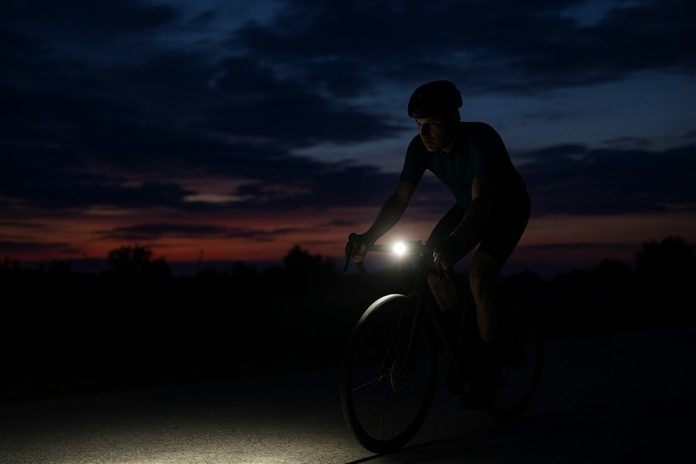Endurance cycling events like Paris-Brest-Paris, Transcontinental Race, and long-distance Audax rides demand careful planning when it comes to bike lighting and power management. Riders may spend entire nights on the road, often in unpredictable weather, with little access to charging points. For these conditions, cyclists typically rely on one of two systems: dynamo lighting with USB charging or power banks paired with rechargeable lights.
Both setups have passionate supporters, but which is best for endurance rides? This article explores the strengths, weaknesses, and practical considerations of each option so you can make an informed decision for your next ultra-distance challenge.
Why Lighting and Power Matter in Endurance Cycling
Unlike short training rides or club runs, endurance cycling often means:
- Night riding: Many events last multiple days, requiring strong and reliable lights.
- Navigation devices: GPS computers, phones, and sometimes trackers all need charging.
- Weather exposure: Rain, cold, and rough roads can test even the best equipment.
- Mental fatigue: A failed light or dead GPS deep into a 400km ride can be devastating.
That’s why lighting and power systems are not just accessories—they are critical infrastructure for endurance riders.
The Case for Dynamo Lights
How Dynamo Systems Work
A dynamo hub is built into the front wheel and generates electricity as the wheel turns. That power can be used directly for lighting or routed through a USB charger to top up devices like GPS units or smartphones.
Popular dynamo hubs include SON, Shimano, and SP, often paired with headlights from brands like Busch & Müller, Exposure, and kLite.
Advantages of Dynamo Lighting
- Unlimited runtime: As long as you keep pedalling, you have power. No worrying about recharging batteries.
- Reliability: Dynamo hubs are weatherproof, durable, and designed for thousands of kilometres.
- Brightness: Modern dynamo lights rival or exceed rechargeable lights, often offering 80–100 lux of steady beam.
- USB charging: With a converter, you can charge your GPS or phone while riding.
- Eco-friendly: No disposable batteries or reliance on mains charging during events.
Drawbacks of Dynamo Systems
- Upfront cost: A quality hub and light setup can cost £500–£1000+.
- Weight penalty: Dynamo hubs add ~400–500g compared to standard hubs.
- Drag: Although minimal, there is slight resistance when generating power.
- Setup complexity: Requires professional wheel building and cabling.
The Case for Power Banks
How Power Bank Systems Work
This method relies on USB-rechargeable bike lights and GPS devices, supported by one or more high-capacity power banks. Riders carry enough stored energy to get through long stretches without mains access, topping up devices during rest stops.
Advantages of Power Banks
- Lower cost: High-quality USB lights plus a power bank setup can be significantly cheaper than a dynamo system.
- Flexibility: Easy to swap between bikes without dedicated wheels or hubs.
- High-capacity options: A single 20,000mAh power bank can recharge a GPS device multiple times and run a light for days.
- No drag: Unlike dynamos, there is zero pedalling resistance.
- Lightweight for shorter events: For brevets up to 200–300km, a small power bank is usually sufficient.
Drawbacks of Power Banks
- Finite capacity: Once your power banks are drained, you need mains access. Not always possible on remote or time-limited events.
- Charging downtime: Topping up large banks at controls can take hours.
- Weight distribution: Multiple power banks add bulk to bags.
- Cable management: Risk of broken or lost charging cables mid-event.
- Battery degradation: Power banks lose capacity over time and may fail unexpectedly.
Side-by-Side Comparison
| Feature | Dynamo Lighting | Power Bank System |
|---|---|---|
| Cost | High (hub + wheel build + lights) | Moderate (lights + power banks) |
| Runtime | Unlimited (as long as you ride) | Limited by battery size |
| Brightness | High, steady beam | High, but limited by battery life |
| Device Charging | Continuous via USB charger | Limited, requires large banks |
| Setup | Complex (hub, wiring, wheel build) | Simple (plug-and-play) |
| Weight | Hub adds ~400–500g | Banks can add 200–600g depending on capacity |
| Reliability | Very high once installed | Dependent on battery condition |
| Best For | Multi-day, unsupported rides | Shorter brevets or where mains charging is frequent |
Choosing the Right System for Your Needs
1. Distance and Duration
- Short brevets (200–300km): Power banks are usually sufficient, especially if you only ride part of the night.
- Multi-day events (400km+): A dynamo system offers unmatched peace of mind when you’ll be riding through several nights.
2. Event Support
- Supported rides with access to mains charging: Power banks may be easier and cheaper.
- Unsupported or remote rides: Dynamo hubs are safer, as you generate your own energy.
3. Budget and Flexibility
- Riders with multiple bikes might prefer power banks, since they don’t require a dedicated dynamo wheel.
- If you’re serious about ultra-distance riding, investing in a dynamo hub pays off over time.
4. Personal Comfort
- Some riders find reassurance in unlimited dynamo power.
- Others dislike the slight drag or don’t want the complexity, preferring to manage batteries instead.
Hybrid Approaches
Many experienced endurance cyclists use a hybrid setup:
- Primary system: Dynamo lighting for reliable visibility.
- Backup system: A small power bank and a USB rear light, in case of mechanical failure.
- Charging priority: GPS and phone via dynamo while riding, power bank reserved for emergencies.
This redundancy is crucial—no single system is 100% fail-proof during multi-day rides.
Real-World Scenarios
Paris-Brest-Paris (1,200km)
With limited time at controls and long stretches of night riding, most riders use dynamo hubs. Power banks can serve as useful backups, but relying on them entirely adds stress.
Transcontinental Race (4,000km+)
Virtually all serious competitors run dynamo systems. The ability to generate light and charge electronics daily is non-negotiable.
Local 200km Audax
A simple USB light and small power bank is often enough—no need for the complexity or cost of a dynamo hub.
Practical Recommendations
- Budget-conscious endurance rider (200–300km events):
- Rechargeable light (e.g., Exposure Strada, Garmin Varia rear).
- 10,000–20,000mAh power bank.
- Cost-effective, simple, flexible.
- Audax rider aiming for Paris-Brest-Paris or multi-day rides:
- SON dynamo hub with Busch & Müller IQ-X or kLite system.
- USB converter (Sinewave Revolution or kLite USB).
- Backup power bank with 5,000–10,000mAh capacity for devices.
- Ultra-distance racer:
- Full dynamo setup with redundancy (two rear lights, backup front light).
- Solar panel (optional) for extended off-grid adventures.
Final Thoughts
When it comes to dynamo lights vs power banks for endurance cycling, there’s no single “best” choice—it depends on the distance, event format, and your personal preferences.
- Dynamo hubs are the gold standard for long, unsupported rides where unlimited, reliable power is critical. They require investment but pay off in peace of mind and reduced charging stress.
- Power banks are ideal for shorter rides, budget-conscious riders, or those who want flexibility across multiple bikes.
For most cyclists tackling serious endurance challenges, a hybrid approach—dynamo lighting supported by a compact power bank—is the most practical solution. It combines the strengths of both systems, ensuring you’re never left in the dark when it matters most.
💡 Key takeaway: If you’re training for PBP or any multi-day Audax, a dynamo system will almost always serve you better. If your focus is weekend brevets or local overnight rides, power banks may be all you need.















